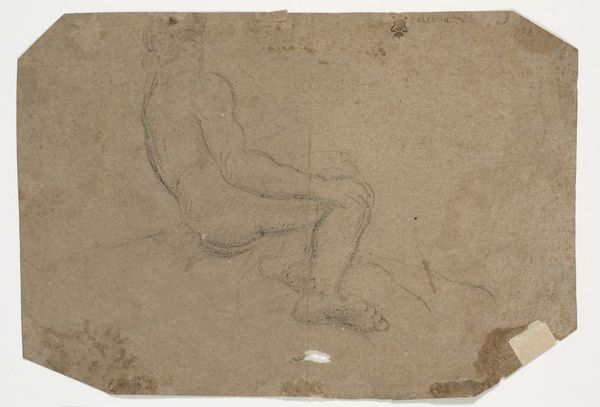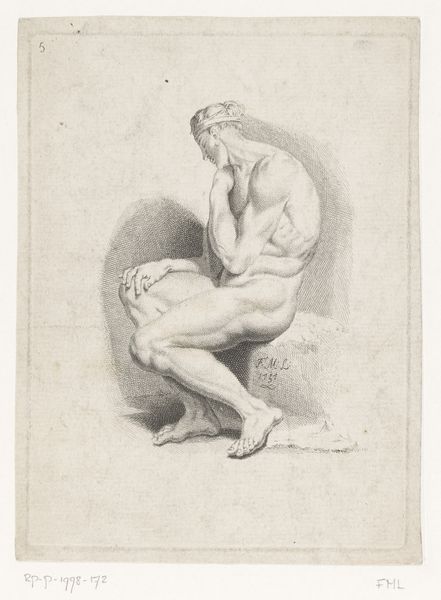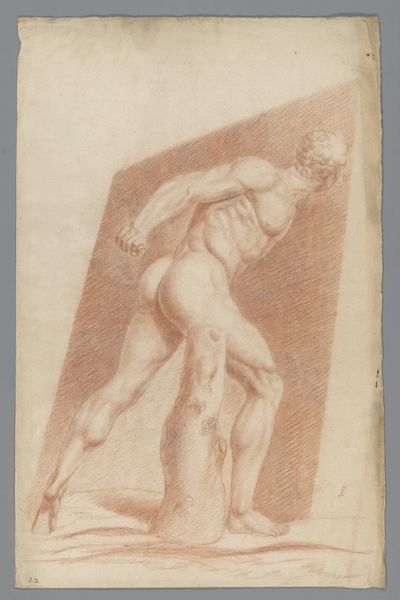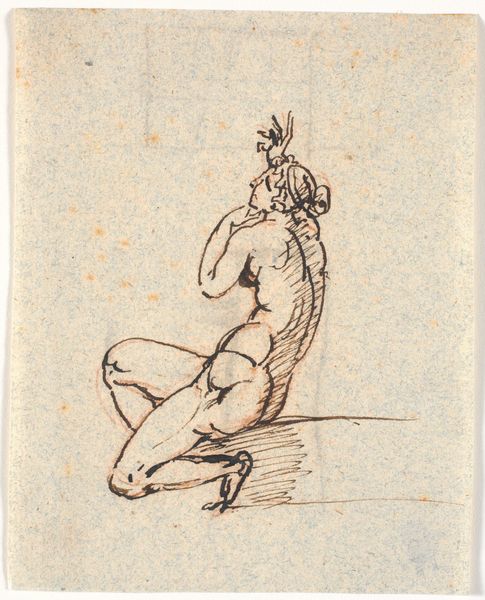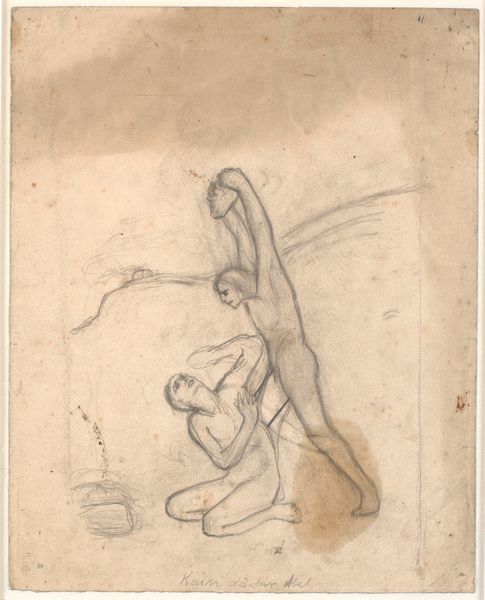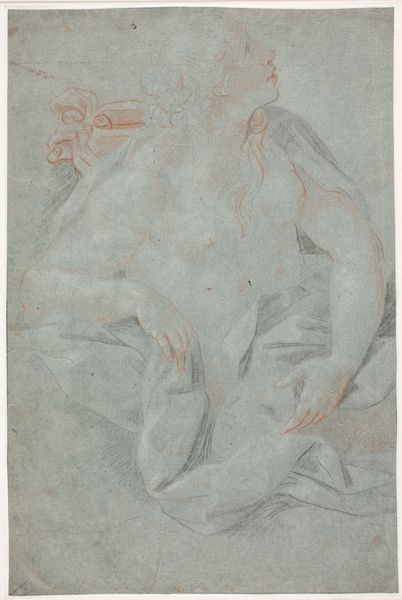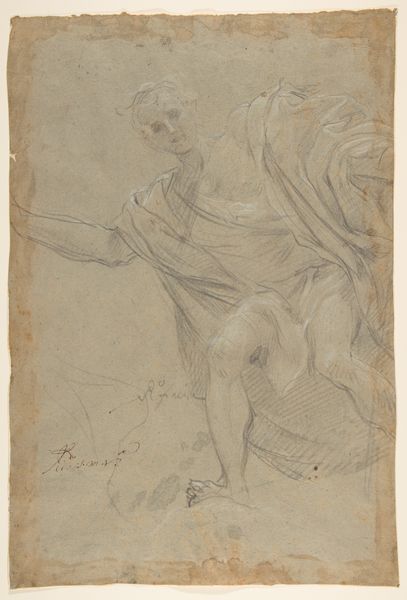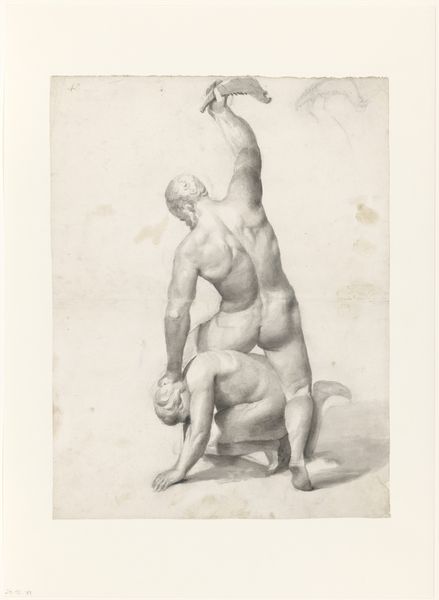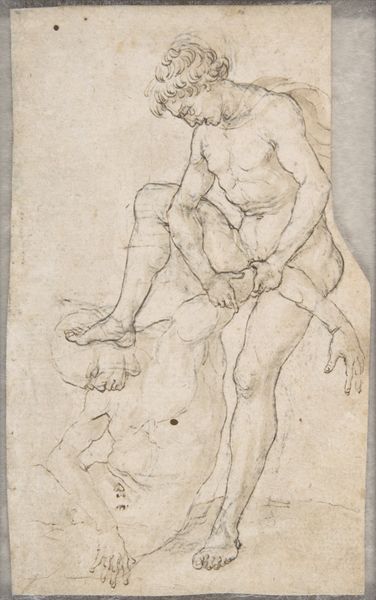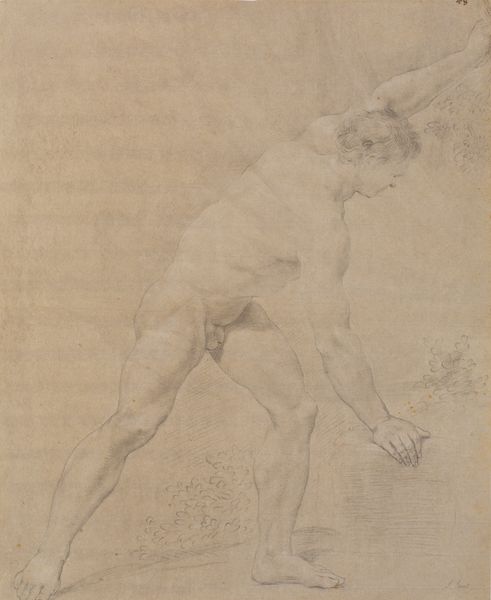
drawing, print, paper, pencil
#
drawing
#
neoclacissism
# print
#
pencil sketch
#
classical-realism
#
figuration
#
paper
#
pencil
#
history-painting
Dimensions: 510 × 404 mm
Copyright: Public Domain
Editor: Here we have John Downman’s “Wounded Warrior from the Statue in Rome,” created in 1794. It’s a pencil drawing on paper, giving it a fragile and almost ghostly presence. It looks like a figure in intense pain or perhaps defiance. What strikes you about this piece? Curator: Considering it’s a preparatory drawing based on a classical sculpture, it reveals much about the labor and social dynamics embedded within Neoclassicism. Look closely – this isn't just about idealizing form, it's also about the means of production. Downman meticulously recreates marble using humble materials, pencil and paper. Editor: So, you're saying the very act of copying it down is significant? Curator: Exactly! The drawing makes visible the process. Consider, too, the availability of classical sculptures. Who had access? Who commissioned Downman’s drawing and why? Neoclassicism often served as a means of projecting power and idealizing certain political and social orders. What does this work reveal about consumption of the antique, and the social hierarchy it reproduces? Editor: That makes me think about the original sculpture, how it was carved, and who paid for that. This drawing is so much more than just an image. It represents a chain of labour and materials! It's like a ghostly echo of the initial artistic enterprise and how that narrative keeps on changing hands based on political interest. Curator: Precisely. Examining its materiality – the fragility of the paper, the repetitive pencil strokes – highlights the economic systems intertwined within artistic creation. What we may perceive as ‘high art’ relies on extensive production process and existing artifacts of cultural significance. Editor: I see it now. It is all these layers and connections between material, production and ownership. Thank you for unveiling such a layered analysis for me.
Comments
No comments
Be the first to comment and join the conversation on the ultimate creative platform.
